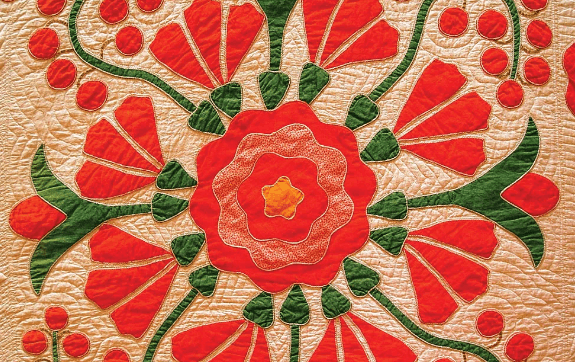A Brief Look At the History and Tradition of Quilting

Quilting is a sewing technique. It means stitching together different layers of fabric. Usually, this involves two layers of fabric with a layer of padding in between. All the layers are stitched together with the lines of stitching themselves forming a pattern.
Quilting can use different stitches but the basic stitch is the most common. What makes it difficult is the thread has to pass neatly through all the layers of the quilt including the bulky padding. Initially, quilting was all done by hand, but these days sewing machines are designed with quilters in mind and offer options for flawless quilting.
When Was Quilting Invented
Scholars are unclear exactly when quilting was invented. They do know that quilting goes back to medieval times. It possibly originated even earlier as Egyptian carvings show a king wearing what appears to be a quilted cloak. There is also some evidence from Asia that goes back around 2000 years.
The earliest use of a quilt cover was to make bed covers. Quilts are frequently mentioned in the inventories of medieval households. Many of these quilts are family heirlooms and are passed down from generation to generation.
Europe
In medieval times in Europe, quilted clothing was worn as additional padding under armour for comfort. Soldiers who could not afford armour often wore quilted outer garments to provide a layer of protection.
There are also examples from Asia of quilted clothes that were worn by lesser nobles as well as exported to the West.
Quilting was extremely popular in the UK in the 17th century. Professional quilters sprang up and made large quilts in addition to garments for the nobility.
Read also Australia’s Favourite Foods
Communal Quilting
There is a long tradition of quilt-making across Europe and North America. People made quilts to keep warm as well as to mark special occasions.
Social quilt-making became popular with groups of quilters sitting around a large quilt, working on different sections at the same time.
Organizations like SA Quilters in Australia sponsor communal quilting events to make and donate quilts to local children’s hospitals. These events attract hundreds of avid quilters to contribute to a worthy cause.
Patchwork Quilting
Patchwork became popular with quilters because it enabled them to use up scraps of fabric and create quilts and garments while saving money. The hippie culture in the latter part of the 20th century made heavy use of patchwork quilting designs. As patchwork spread it was adopted by wealthy individuals who would buy expensive fabrics to create beautiful patchwork quilts.
A technique was developed in Britain during the 17770s of drawing and cutting out the pattern on paper. Once the design was produced fabric was folded around the pieces of paper and joined together. This technique is still referred to as “English paper piecing”.
As quilts became increasingly popular new styles and techniques have been developed. These are not the result of practicality but are an expression of art and beauty. Quilts have developed into stunning works of art incorporating styles from patchwork and applique to trapunto. Many of these masterpieces hang in the world’s finest museums.





